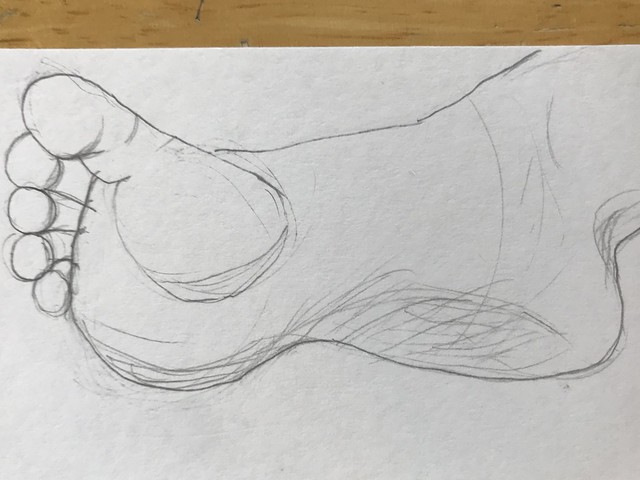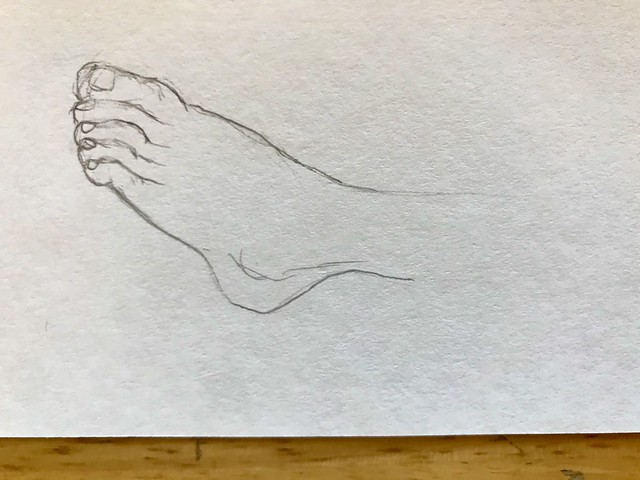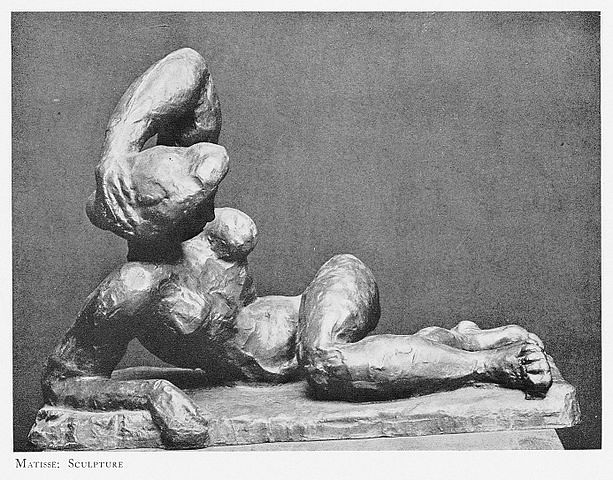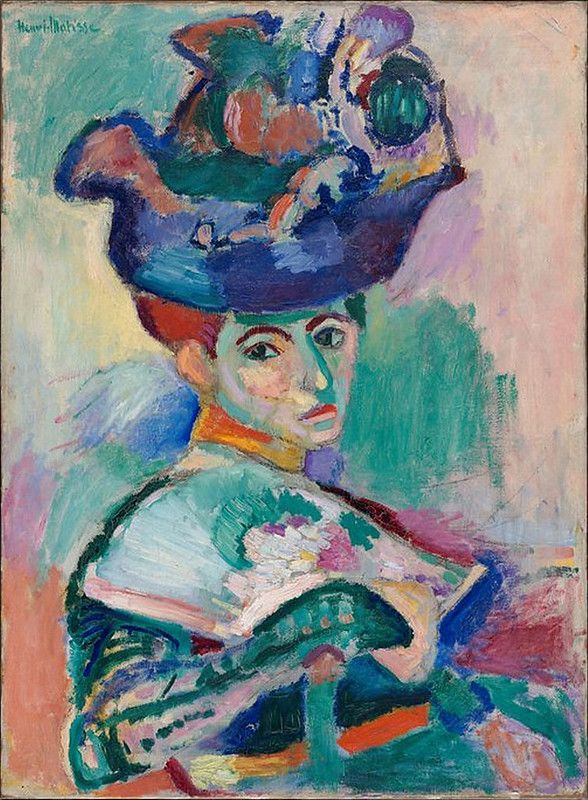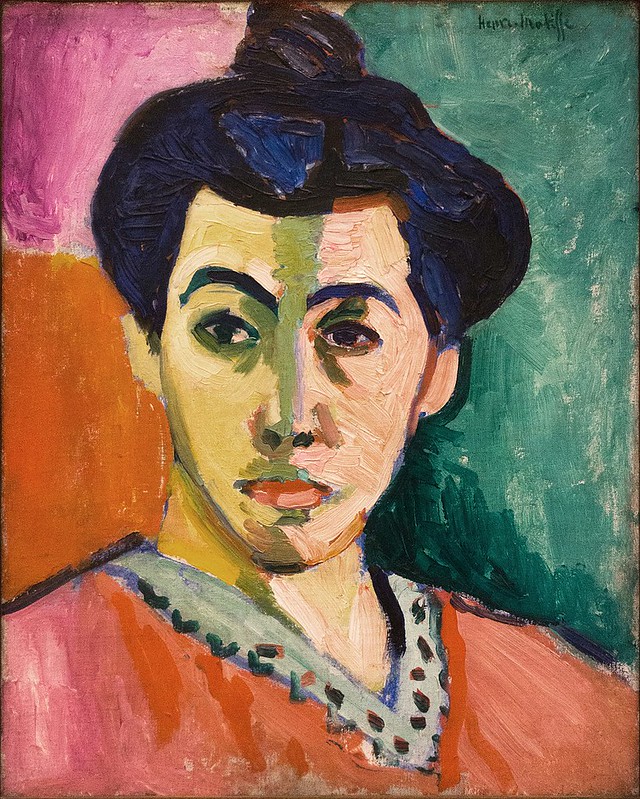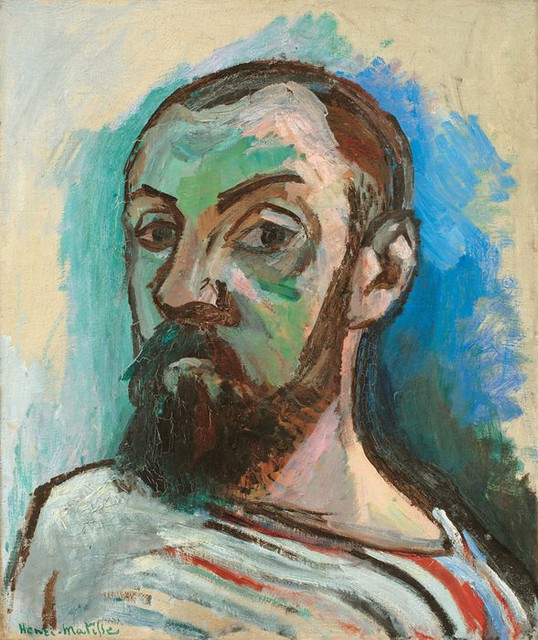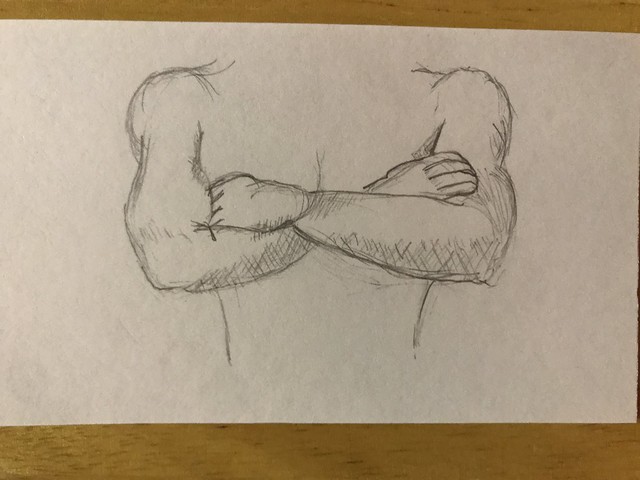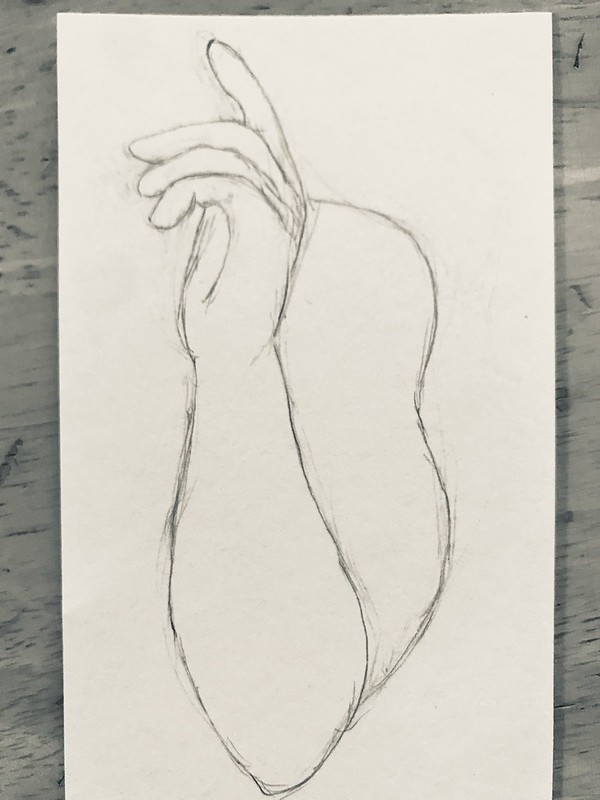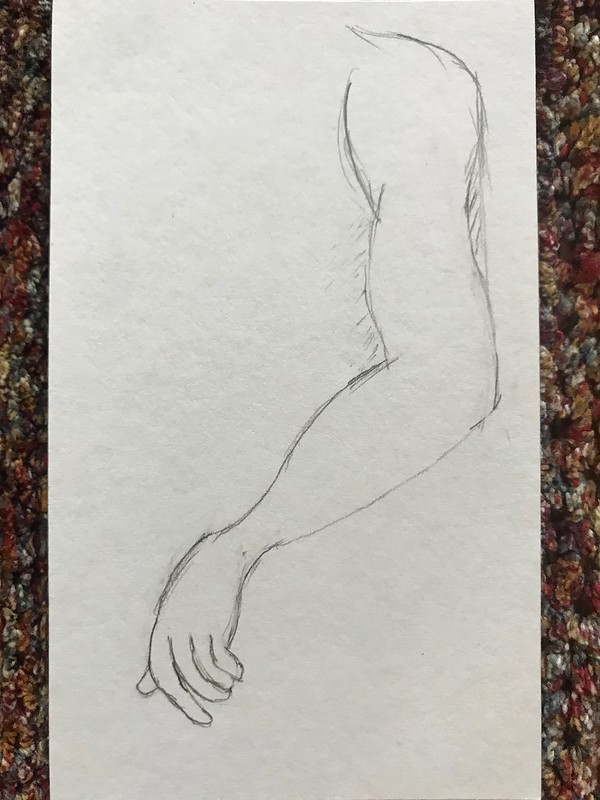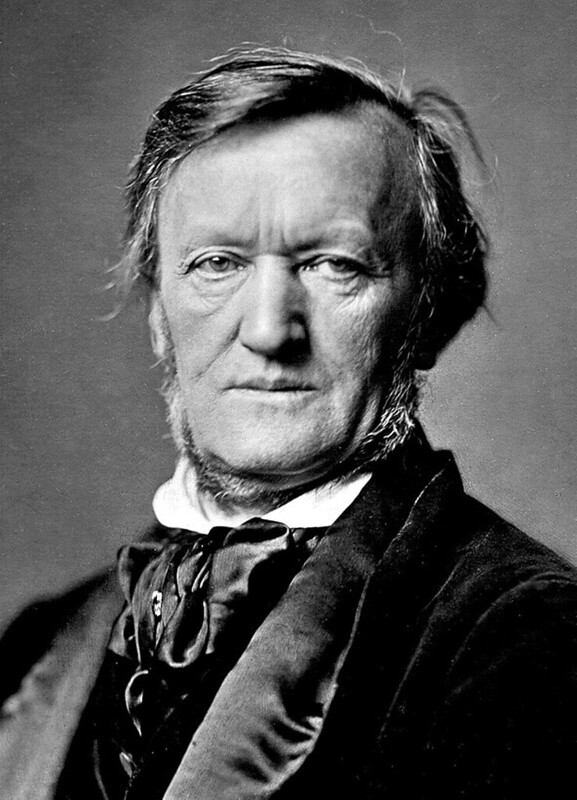Drawing a person (or part of a person) every day in June and July for the Index-Card-a-Day Challenge.
Monthly Archives: June 2021
Wordless Wednesday/ Flower of the Day: Tecoma Yellow Bells
#dyicad2021 Day 29
Drawing a person (or part of a person) every day in June and July for the Index-Card-a-Day Challenge.
Henri Matisse, the Cut-Out Guy
Henri Matisse (1869-1954), French artist, painter, and sculptor, was one of the most important influencers and innovators of early 20th century modern art.
In researching Matisse online, I found so much excellent material that I could not possibly do him justice by giving you a 1000-word summary. Instead, I am providing you a curated group of links to the best of the best articles and videos I came across, as well as some public domain (in the US) images of some of his pieces.
Archival footage of Matisse at work:
And a fascinating one-hour BBC documentary, Becoming Matisse:
I recently discovered, though, that the works I most associate with Matisse, the ones with colorful leaf and petal shapes, are not actually paintings but cut-outs of painted paper.
This article describes Matisse’s cut-out process.
Navigate through these images of Matisse’s cut-outs by using the arrows in the lower right corner of the screen.
Matisse’s final project was building a chapel. To get the full effect, visit it in person. The second-best experience would be to peruse these four links:
#dyicad2021 Day 28
Drawing a person (or part of a person) every day in June and July for the Index-Card-a-Day Challenge.
Monday Morning Wisdom #316
#dyicad2021 Day 27
Drawing a person (or part of a person) every day in June and July for the Index-Card-a-Day Challenge.
From the Creator’s Heart #313
#dyicad2021
Drawing a person (or part of a person) every day in June and July for the Index-Card-a-Day Challenge.
Richard Wagner: Genius and Jerk
When I was in high school and college, I disliked Richard Wagner. To me, his music felt very brass-heavy, thick.
Funny, isn’t it, how life changes you. A few years ago I discovered that Wagner’s music is exceptionally lush. Hearing it live in person gives me chills. This is my favorite:
Talk about strong, beautiful women!
Wagner (1813 –1883) was a German composer, theater director, and conductor best known for his operas (or “music dramas”). He wrote not only the music for each of his stage works, but also the libretto (story line and words). He was also notoriously opinionated, an outspoken socialist German nationalist and anti-Semite. His personal life included political exile, torid love affairs, poverty, and debt.
From childhood he loved opera and knew he wanted to write for musical theater. He pursued music lessons as a means to that end. He was particularly influenced by Beethoven’s music, which he studied and analyzed. He even transcribed Beethoven’s ninth symphony for piano.
Wagner married his first wife, actress Minna Planer, in 1836. In May 1837, Minna left Wagner for another man, but she came back the following year. Their marriage continued in this on-again-off-again manner, due to infidelity and financial problems.
Wagner finished his fourth opera (and first very successful one), Der fliegende Holländer (The Flying Dutchman), in 1843, and Tannhäuser in 1845.
Der fliegende Holländer is about a ghost ship whose ghost captain is cursed to roam the sea forever. The only way to end his everlasting voyage: Every seven years the waves will cast him upon the shore; if he can find a wife who will be true to him, he will be released from his curse. Listen to the overture, hear the waves:
Here is the Grand March from Tannhäuser, arranged for brass and percussion:
Wagner played a minor supporting role in a political uprising in Dresden in 1849, and when a warrant was issued for his arrest, he fled to Switzerland, where he remained until 1858. He had just finished Lohengrin, and he corresponded with his good friend Franz Liszt, begging him to have it staged in his absence. Liszt conducted the premiere in Weimar in 1850.
You may recognize this famous theme from Lohengrin:
While in Switzerland, Wagner conducted a sexual affair with the wife of a friend of a friend. He even planned to run off with her. Meanwhile, his first (and current) wife Minna lapsed into a deep depression. Later, after she discovered he was having an affair with yet another woman, Wagner and Minna separated.
In Switzerland, Wagner worked on Tristan and Isolde and three of the four great dramas that would become the Ring cycle, Das Rheingold, Die Walküre, and Sigfried.
This is archival footage of Jessye Norman singing the Liebestod from Tristan und Isolde in 1987, Herbert von Karajan conducting:
Wagner spent the next part of his exile in Venice and Paris, while Minna returned to Germany. She visited him in Paris, and they tried to reconcile, but were unsuccessful.
In 1862, Germany lifted the ban against Wagner, and he returned to Germany, settling in Biebrich. Minna visited him there one more time, but they parted for good. Wagner supported her until her death in 1866.
Wagner began work on Die Meistersinger von Nürmberg. He also tried to have Tristan und Isolde produced in Vienna, but in rehearsals it was deemed “impossible” to sing, and the opera never opened, which added to Wagner’s financial problems.
Wagner’s luck changed in 1864, when King Ludwig II succeeded to the throne of Bavaria at the age of 18. An ardent admirer of Wagner’s operas, he invited the composer to Munich. Ludwig, who was homosexual, expressed his love for the composer, and Wagner feigned reciprocal feelings so he could milk the relationship for opportunities and benefits. Ludwig settled Wagner’s debts and proposed staging Tristan und Isolde, Die Meistersinger, and the Ring dramas. Wagner began work on his autobiography, Mein Leben, at the King’s request.
Tristan und Isolde premiered at National Opera Munich in June of 1865. The conductor of this premiere was Hans von Bülow, whose wife, Cosima, had given birth in April that year to a daughter, named Isolde (whose father was Wagner).
Cosima was 24 years younger than Wagner and was the daughter of the Countess Marie d’Agoult, who had left her husband for Franz Liszt. Liszt initially disapproved of his daughter’s involvement with his friend Wagner. The affair scandalized Munich, and leading members of the court were suspicious of Wagner’s influence on the King. In December 1865, Ludwig was finally forced to ask the composer to leave Munich.
Ludwig installed Wagner at the Villa Tribschen, located beside Switzerland’s Lake Lucerne. Die Meistersinger was completed at Tribschen in 1867, and premiered in Munich in June the following year. At Ludwig’s insistence, “special previews” of Das Rheingold and Die Walküre were performed in Munich in 1869 and 1870, but Wagner dreamed of presenting his first complete cycle at a special festival at a new, dedicated, opera house designed to his specifications.
Meanwhile, Cosima begged Hans von Bülow to grant her a divorce, but Bülow refused. He consented only after she had two more children with Wagner; another daughter, named Eva, after the heroine of Die Meistersinger, and a son Siegfried, named for the hero of the Ring. The divorce was finally granted in July 1870. Richard and Cosima’s wedding took place a month later. The marriage lasted to the end of Wagner’s life.
In 1872, the Wagners moved to Bayreuth, where his new opera house would be located. The town council donated a large plot of land—the “Green Hill”—and the foundation stone for the Bayreuth Festspielhaus (“Festival Theatre”) was laid. Wagner initially announced the first Bayreuth Festival, at which for the first time the Ring cycle would be presented complete, for 1873, but since Ludwig had declined to finance the project, the start of building was delayed and the proposed date for the festival was postponed. To raise funds for the construction, “Wagner societies” were formed in several cities, and Wagner began touring Germany conducting concerts. By the spring of 1873, only a third of the required funds had been raised; further pleas to Ludwig were initially ignored, but early in 1874, with the project on the verge of collapse, the King relented and provided a loan. The full building program included the family home, “Wahnfried,” into which the Wagners moved in April 1874. The theatre was completed in 1875, and the festival scheduled for the following year. Commenting on the struggle to finish the building, Wagner remarked to Cosima: “Each stone is red with my blood and yours.”
Wagner created several theatrical innovations at Bayreuth; these include darkening the auditorium during performances, and placing the orchestra in a pit out of view of the audience.
The Festspielhaus finally opened in August 1876 with Das Rheingold, at last taking its place as the first evening of the complete Ring cycle; the 1876 Bayreuth Festival saw the premiere of the complete cycle, performed as a sequence as the composer had intended. The 1876 Festival consisted of three full Ring cycles (under the baton of Hans Richter). At the end, the Norwegian composer Edvard Grieg thought the work “divinely composed,” but the French newspaper Le Figaro called the music “the dream of a lunatic.” Friedrich Nietzsche was bitterly disappointed by what he saw as Wagner’s pandering to increasingly exclusivist German nationalism. However, the festival firmly established Wagner as an artist of international prestige.
Wagner was far from satisfied with the Festival; Cosima recorded that months later, his attitude towards the productions was “Never again, never again!” Moreover, the festival finished with a huge deficit. The expenses of Bayreuth and of Wahnfried meant that Wagner still sought further sources of income by conducting or taking on commissions.
Wagner’s most important stage works continue to be performed at the annual Bayreuth Festival, run by his descendants.
Richard Wagner is the earliest composer most specifically associated with the concept of leitmotif. His Der Ring des Nibelungen uses hundreds of leitmotifs, short melodic or harmonic themes often related to specific characters, things, ideas, or situations. While some of these leitmotifs occur in only one of the operas, many recur throughout the entire cycle. This practice is used today extensively in movie soundtracks. John Williams is a master of leitmotif.
I have never sat through one of Wagner’s operas, though I’ve heard excerpts at the Phoenix symphony and seen scenes on TV and online. I’ve discovered that Opera North in England has filmed the entire Ring cycle and posted it on its website. I want to watch it. All of it.
I am seriously considering issuing a challenge to ARHtistic License readers to watch the entire Ring cycle. We’re all busy, so maybe we could do it in segments, one opera per month, and post our reactions. Would you be interested? If so, let me know in the comments below, and give me your suggestions about how we could do this. If by the end of June we have at least ten people who want to participate, we’re on!
